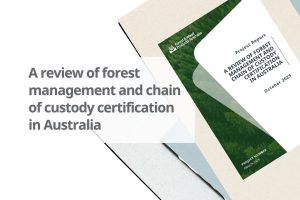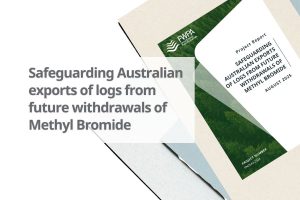In Australia’s export market, wood pellets remain in the shadow of woodchips, but globally the demand is growing rapidly.
Australia’s woodchip and wood pellet exports totalled 7.495 million bone dried metric tonnes (bdmt) over the last year. Most of this tonnage consisted of hardwood chip exports, at 6.747 million bdmt, with only 97,497 tonnes being wood pellets. Nonetheless, our wood pellet exports are growing and their future looks bright.
Industry analyst FutureMetrics has published a new white paper arguing that countries serious about lowering carbon emissions from the power sector should pursue the use of wood pellets as a replacement for coal.
The white paper highlights England as a real-world example of how pellet-fuelled pulverised coal power stations can be part of the solution to lower carbon emissions.
But it isn’t all smooth sailing. Wood pellets, especially when they are fresh, are chemically active and can emit significant quantities of carbon monoxide. Fatal accidents have occurred in storerooms and on board ships as a result of CO poisoning.
A study of current wood pellet bulk handling at European import terminals found the equipment and processes need to be modified from those used for other bulk materials. Factors including dust emission and explosions, degradation in storage, self-heating and ignition need to be considered in the design of dedicated wood pellet port terminals, as demand for this biofuel increases.
While wood pellet terminals might be able to cope with the low amounts being traded currently, a re-examination and redesign of terminal facilities to accommodate the increased volumes will probably be required by 2030.
Apart from adapting the handling process, there might be merit in researching the replacement of normal wood pellets, which currently constitute 100% of the co-firing fuel, with steam-treated or torrefied pellets.
These types of pellets are generally more energy intensive and costly than conventional pellet production methods, but have a higher calorific value than normal wood pellets. They are also more resistant to moisture and degradation, and can generally be handled with conventional bulk equipment, with minimal or no need for retrofitting or replacing infrastructure, resulting in greater operational flexibility with lower investments.
The market for torrefied pellets is less mature and its future is not yet clear.
Source:
Dafnomilis, I., Lodewijks, G., Junginger, M., & Schotta, D.L. (2018). Evaluation of wood pellet handling in import terminals. Biomass and Bioenergy, 117, 10–23.
FutureMetrics (October 29, 2018). Coal Power Stations that Convert to Wood Pellets Supply Reliable On-Demand Baseload and Peaking Power.



